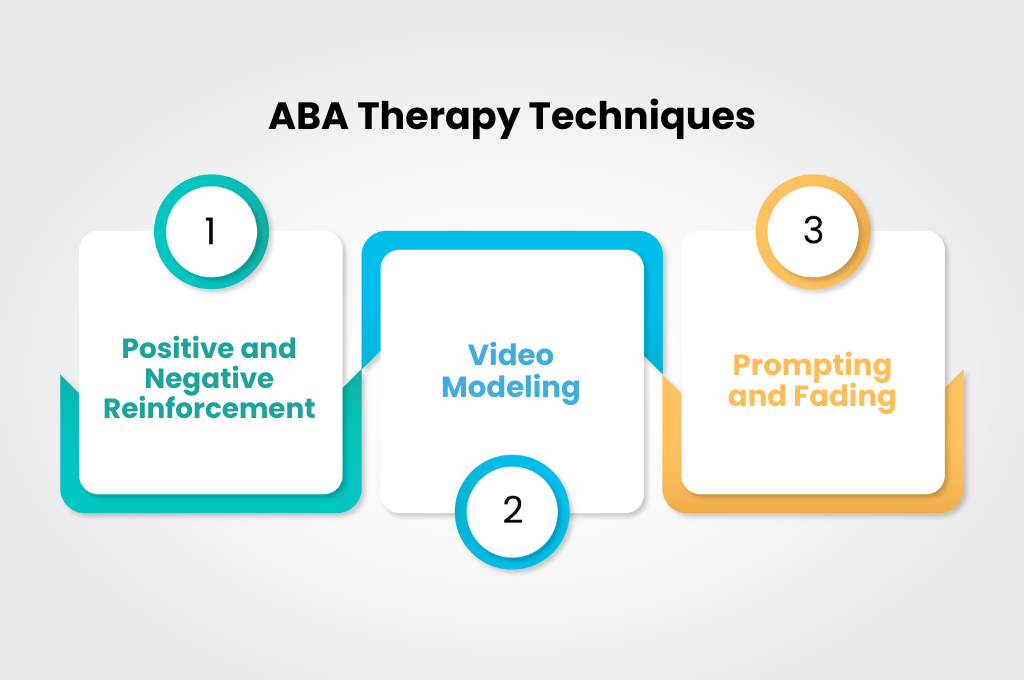Colorados Spectrum of ABA Therapy Techniques
ABA TherapyJuly 17, 2025

ABA Therapy in Colorado
Checking out Autism Therapy in Colorado comes with its set of ethical hurdles and the need for serious thought about providing top-notch care. It's all about looking after the folks getting ABA therapy here.
Ethical Challenges in Practice
Let's be honest, if you're a Board Certified Behavior Analyst (BCBA) working in the quieter corners of Colorado, you're gonna hit some snags. Like waiting in line too long for your morning coffee, only it's resources and practitioners that are in short supply. This isn't just annoying—it brings up some real ethical head-scratchers. How do you make sure folks get the care they need, on time, when you're working with a shoestring budget and a skeleton crew? There's no skipping the fine print here. BCBAs in Colorado have to break down everything for clients and their families—what you're doing, how you're doing it, and any bumps in the road to watch out for. This is especially critical in areas where finding reliable info is as easy as spotting Bigfoot.
Quality of Care Considerations
For BCBAs in Colorado, their clients’ welfare is numero uno. This means constantly checking what works and tweaking what doesn’t, just like a DJ adjusting playlists for each unique audience. This becomes even more crucial in rural places that are working with minimal resources. Here, it's key that services can roll with the punches and fit into any backdrop. Supervision is like having Google Maps in a foreign country—providing that extra layer of support so nothing goes wonky. Even if finding the right supervisors feels like a needle-in-a-haystack situation, building strong connections and mentorship in the ABA world helps keep everything on the straight and narrow (Bright Pathways ABA).
By tackling ethical challenges head-on and keeping our eyes on quality care, ABA therapists in Colorado can aim high and hit the bullseye of service and ethics, giving a real boost to the lives of those they’re helping out.
ABA Therapy Techniques

Positive and Negative Reinforcement
When diving into ABA therapy, Positive and Negative Reinforcement are the real game changers for folks with autism and other conditions. Positive reinforcement? Think of it like a high-five, where a rewarding treat follows good behavior, giving that satisfying "I did it!" vibe. Meanwhile, negative reinforcement isn't as grumpy as it sounds! It's more like the relief of taking off tight shoes. Here, you remove something uncomfy to boost good behavior, making it clear that being on your best behavior has its perks (Behavioral Innovations).
Positive reinforcement shows up in many costumes—verbal cheers, shiny tokens, maybe even a favorite snack—aimed at getting the individual all jazzed up to keep doing the right thing. Negative reinforcement? Just removing that annoying math test for completing homework on time, upping the odds that good behavior sticks around.
Video Modeling
Let's chat about Video Modeling, a snazzy ABA tool that uses videos like a magic mirror to reflect new skills or behaviors for kids. By presenting easy-to-follow demonstrations, it helps those with autism to catch on and repeat specific tasks with finesse. The video magic boosts confidence as they nail social interactions, get chatting off to a good start, and solve problems like pros. Video modeling is the Swiss Army knife of ABA therapy, helping folks grow essential skills by showing what success looks like (Behavioral Innovations).
This technique rocks for visual learners who can watch and then mimic what they see on screen. Like learning dance moves from YouTube, observing the steps makes picking up new skills smooth sailing.
Prompting and Fading
Prompting and Fading is like having training wheels on a bike. It’s there to guide at first but slowly fades away as balance is found. In ABA, prompts show how to do a task, then take a backseat once the person's got it. The process starts by giving more direct help (prompting), making way for independence by easing off as skills improve. In this dance between support and freedom, learning sticks and skills shine (Behavioral Innovations).
Begin with clear prompts, whether it's a quick nudge or a helpful hint, tailored to how the person’s progressing. As skills are nailed down, pull those prompts away, leaving the learner to strut their stuff solo. This method bolsters independence and confidence.
Toss Positive and Negative Reinforcement, Video Modeling, and Prompting and Fading into your ABA sessions, and you're not just looking at lessons—you've got a whole toolkit for shaping behavior and growing skills. With these well-loved tricks in play, individuals don’t just learn, they flourish, tapping into their potential to thrive in the hustle and bustle of life.
Implementation and Benefits
Hey there, let's take a ride down the ABA highway with some exciting stops like Natural Environment Teaching, Task Analysis, and Treatment Intensity and Duration – the big three that are making waves in Colorado! Buckle up, 'cause we're in for an engaging trip through these approaches.
Natural Environment Teaching
Natural Environment Teaching (NET) is all about turning everyday life into a learning playground. Imagine your child picking up skills in familiar places like home or school, and applying them without skipping a beat. It’s not just about learning in a classroom – life itself becomes the teacher. This technique is fantastic because it helps kids mesh what they learn with real-world situations. For all you curious parents out there, check out more about how NET fits into autism therapy in Colorado.
Task Analysis
Task Analysis is like a magic wand for skill-building. Picture tackling a big challenge by slicing it into bite-sized steps, making it much easier to chew. That's what Task Analysis does – takes a daunting task and breaks it down into tiny, manageable tasks. For kids with autism, learning step-by-step gives them the confidence to master each part before moving onto the next. It’s like a video game where you unlock levels, making each victory sweeter than the last. To dive deeper into strategies, check out ABA therapy strategies in Colorado.
Treatment Intensity and Duration
Now let’s talk about spending quality time for quality results. Imagine building a skyscraper – you need a strong foundation and enough time to get those floors up. That’s how it is with ABA therapy’s treatment hours. Research has shown that more hours mean more progress – it’s simple math! Start 'em young, and you’re looking at some pretty amazing long-term results! Here's a tip: many insurance plans are on board with ABA, so get in touch and make sure you're getting the most out of your coverage. Detailed info can be found at Colorado Behavior & Learning Group's website.
Plus, it's all about staying the course – from assessment to progress tracking. Keep tabs on the journey, and watch as those skills grow and bloom, shaping a better life. For more about tracking and assessment, hit up Magneta ABA’s blog.
By exploring these ABA strategies – NET, Task Analysis, and understanding how intensity and duration pay off – you're not just unlocking potential. You're paving the path for a journey filled with growth, progress, and a future that shines bright.
Access and Coverage in Colorado
When you're thinking about ABA therapy in Colorado, it's a good idea to dig into what insurance and Medicaid will fork out, plus check out the licensing rules and autism support goodies available to make sure folks get the top-notch care they need.
Insurance and Medicaid Coverage
In Colorado, Medicaid gives ABA therapy a big thumbs-up as a covered benefit. Whether you’re rocking a one-person gig at home or a bustling fam of eight, there’s assistance based on your earnings. For a solo household, if you're not pulling in more than $16,612, Medicaid's got your back. For bigger broods, the cap is $57,762. This is a lifeline making sure that families get access to pocket-friendly health insurance that includes ABA therapy, no matter what the autism diagnosis is under Colorado Medicaid's plan.
Want to get down to brass tacks about what ABA therapy might set you back and the tricks for nabbing financial help, like scholarships and grants? Peek into our article on ABA therapy costs in Colorado.
Licensing Requirements
If you're dabbling in ABA therapy in Colorado, you gotta jump through some hoops in the licensing department to prove you're up to snuff. We’re talking about getting the right certifications, shaking hands with the necessary training programs, and clocking in those supervised clinical hours. These licensed pros are crucial for ensuring therapy is top-shelf and moldable to what each client really needs.
If you're itching for the nitty-gritty on what it takes license-wise for ABA therapy folks in Colorado, hop on over to our guide on ABA therapy licensure in Colorado.
Autism Support Resources
Colorado’s got the goods when it comes to autism resources, and it's not shy about offering primo healthcare coverage for treatment costs and access to therapy hubs stocked with all kinds of services (The TreeTop ABA Therapy). This state is all about rolling out the welcome mat for families and individuals wrestling with autism, making sure they can snag the services and treatments needed to live their best lives.
For a hot list of autism support services and resources in Colorado, look no further. We've got info on in-home ABA therapy, seminars, training programs, and more. Check out our resource directory on ABA therapy resources in Colorado. These nuggets of wisdom are crafted to boost families and educators with the know-how and support to navigate the twists and turns of autism care in Colorado and make solid choices on ABA therapy.
Learn More: ABA Therapy Grants and Financial Aid in Colorado
